The Sweet Jalebi Its Benefits and Impact on Health.
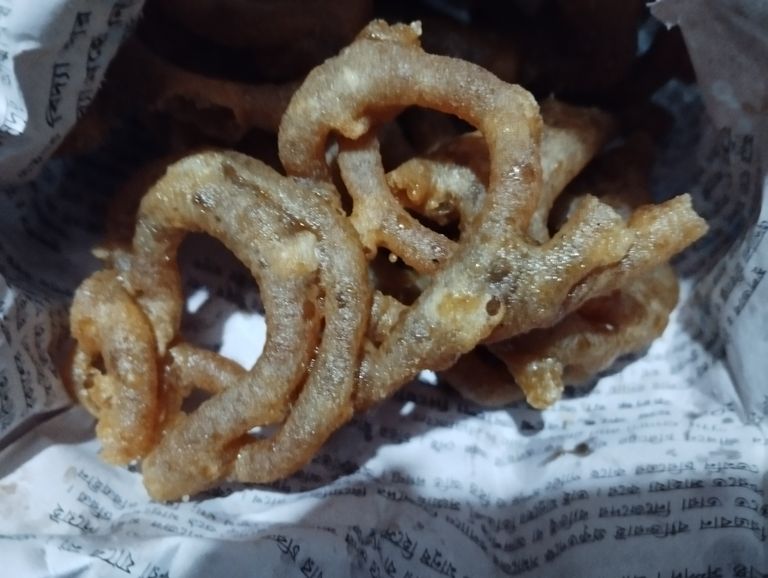
Jalebi, the crispy and sugary Indian dessert, holds a special place in the hearts of sweet lovers around the world. Its spiraling shape, crunchy texture, and indulgent sweetness make it a treat for festive occasions, celebrations, and even as a quick snack. However, like most sugary delights, jalebi also has its share of pros and cons when it comes to health. This blog explores the nutritional aspects of jalebi and its impact on the body, helping you understand how to enjoy it responsibly.
What is Jalebi?
Jalebi is a deep-fried dessert made from a fermented batter of all-purpose flour (maida) or wheat flour, sometimes mixed with yogurt. After frying, the spirals are soaked in sugar syrup, giving them their signature sweetness and glossy appearance.
Traditionally, jalebi is served warm, often paired with milk or rabri (sweet condensed milk). Variations like "paneer jalebi" or "khoya jalebi" incorporate additional ingredients for enhanced richness.
Nutritional Profile of Jalebi
A standard serving of jalebi (approximately 50 grams) contains:
Calories: 150–200 kcal
Carbohydrates: 30–35 grams (primarily sugars)
Fats: 7–10 grams
Proteins: 1–2 grams
Vitamins and Minerals: Minimal
The calorie count and sugar content make jalebi an energy-dense food. However, its nutritional value is limited, as it lacks significant fiber, protein, or micronutrients.
Benefits of Jalebi
- Quick Energy Boost:
Jalebi is rich in simple carbohydrates, making it an instant source of energy. This can be beneficial for athletes or individuals needing quick recovery from fatigue.
- Mood Enhancer:
The sugar in jalebi triggers the release of dopamine, the "feel-good" hormone, providing a sense of happiness and satisfaction.
- Tradition and Social Bonding:
Jalebi is often associated with celebrations, festivals, and family gatherings, fostering a sense of cultural identity and togetherness.
- Fermentation Benefits (in Homemade Variants):
Traditional recipes use fermented batter, which can introduce probiotics that aid digestion, though these benefits are largely lost during frying.
Potential Risks of Eating Jalebi
- High Sugar Content:
Jalebi is loaded with refined sugar, which can lead to blood sugar spikes, increasing the risk of diabetes when consumed in excess.
- Rich in Trans Fats:
Deep frying in hydrogenated oils or reused cooking oils can introduce unhealthy trans fats, contributing to heart disease.
- Weight Gain:
The combination of sugar and fat makes jalebi calorie-dense, potentially leading to weight gain if consumed regularly.
- Minimal Nutritional Value:
Jalebi provides "empty calories," offering energy without essential nutrients like vitamins, minerals, or fiber.
- Impact on Dental Health:
The sticky sugar can adhere to teeth, promoting cavity formation if oral hygiene is neglected.
How to Enjoy Jalebi Responsibly
- Moderation is Key:
Limit your intake to small portions and avoid consuming jalebi daily. Treat it as an occasional indulgence.
- Pair with Healthy Foods:
Combine jalebi with nutrient-rich foods like milk or nuts to balance its nutritional profile.
- Opt for Homemade Versions:
Preparing jalebi at home allows you to use healthier oils and control the sugar content.
- Avoid Reheated or Overly Sweet Variants:
Freshly made jalebi is less likely to contain harmful trans fats, and reducing the sugar syrup coating can make it slightly healthier.
- Stay Active:
Balance occasional indulgences with regular physical activity to maintain a healthy weight and metabolism.
Conclusion
Jalebi is undeniably delicious and a cherished part of many cultures. While it has some benefits, especially as a quick source of energy or a festive treat, its high sugar and fat content make it a food that should be consumed in moderation. By enjoying jalebi mindfully and balancing it with a healthy lifestyle, you can savor its sweetness without compromising your well-being.
How to Make Perfect Jalebi: A Step-by-Step Guide
Jalebi, a popular sweet treat in South Asia, is loved for its crispy texture, juicy syrup, and delightful spiral shape. It's often enjoyed during festivals, celebrations, or even as a comforting dessert with tea. Making jalebi at home might seem intimidating, but with the right method and patience, you can create this traditional sweet easily. Here's a detailed guide to help you make perfect jalebi.
Ingredients
For the Batter:
1 cup all-purpose flour (maida)
2 tablespoons cornflour
1 tablespoon gram flour (optional, for extra crispiness)
1/4 teaspoon baking powder or a pinch of baking soda
1/2 cup yogurt (curd)
1/2 cup water (adjust as needed)
A pinch of yellow or orange food coloring (optional)
For the Sugar Syrup:
1 cup sugar
1/2 cup water
1/4 teaspoon saffron strands or a pinch of food coloring
1/4 teaspoon cardamom powder
1/2 teaspoon rose water (optional)
A few drops of lemon juice
For Frying:
Ghee or oil (for deep frying)
Step-by-Step Instructions
Prepare the Batter
In a mixing bowl, combine all-purpose flour, cornflour, gram flour (if using), and baking powder.
- Add yogurt and mix well to form a thick batter. Gradually add water to achieve a smooth, pouring consistency.
- Mix in the food coloring (if desired) to give the batter the signature jalebi color.
- Cover the bowl and let the batter ferment for 8-10 hours or overnight in a warm place. This fermentation step enhances the flavor and texture.
Make the Sugar Syrup
Combine sugar and water in a saucepan over medium heat. Stir until the sugar dissolves.
- Add saffron strands or food coloring, cardamom powder, and rose water for aroma and flavor.
- Let the syrup boil for 5-7 minutes until it reaches a one-string consistency (a single thread should form between your fingers when you test a drop of syrup).
- Add lemon juice to prevent crystallization and keep the syrup warm.
Prepare for Frying
Heat ghee or oil in a flat, deep frying pan. The oil should be medium-hot, not too hot, to ensure even cooking.
- Pour the batter into a piping bag, squeeze bottle, or a zip-lock bag with a small hole cut at one corner.
Shape and Fry the Jalebi
Squeeze the batter into the hot oil in spiral shapes, starting from the center and moving outward.
- Fry until the jalebis turn golden and crispy on both sides. Remove them using a slotted spoon and drain the excess oil.
Soak in Sugar Syrup
Immediately immerse the fried jalebis in warm sugar syrup for 30 seconds to 1 minute. Ensure they're fully coated with syrup.
- Remove the jalebis and place them on a plate to cool slightly.
Tips for Perfect Jalebi
Fermentation: Fermenting the batter is key for the tangy flavor. If you're short on time, you can add a pinch of citric acid or lemon juice to mimic the taste.
Consistency: The batter should be thick but flow smoothly. Adjust the water as needed.
Temperature: Maintain medium heat while frying. Too hot oil can burn the jalebis, while low heat makes them soggy.
Sugar Syrup: Ensure the syrup is warm but not hot when soaking the jalebis.
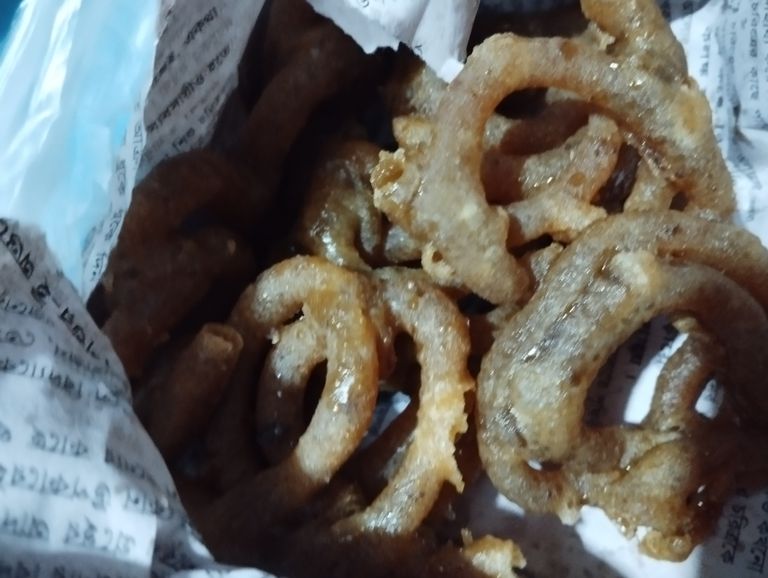
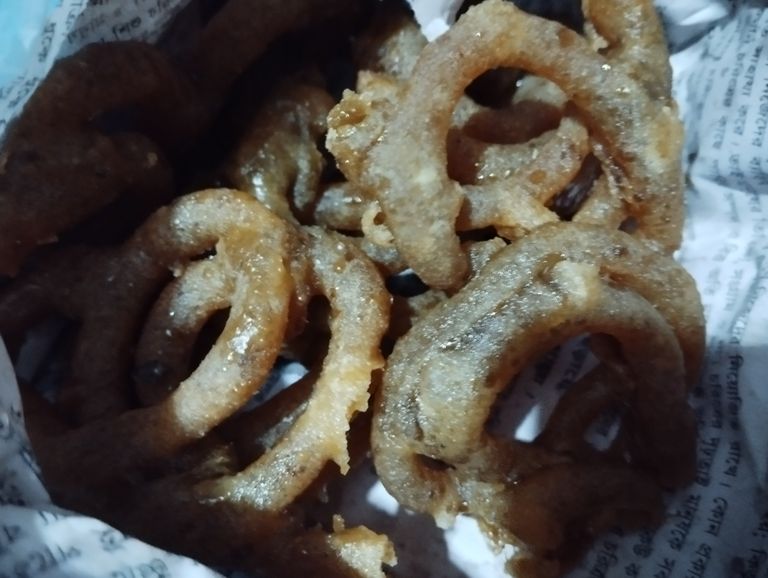
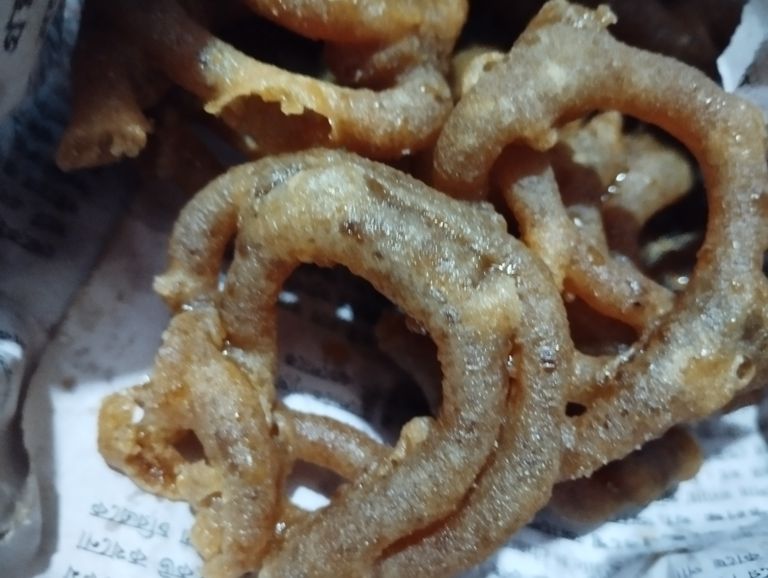
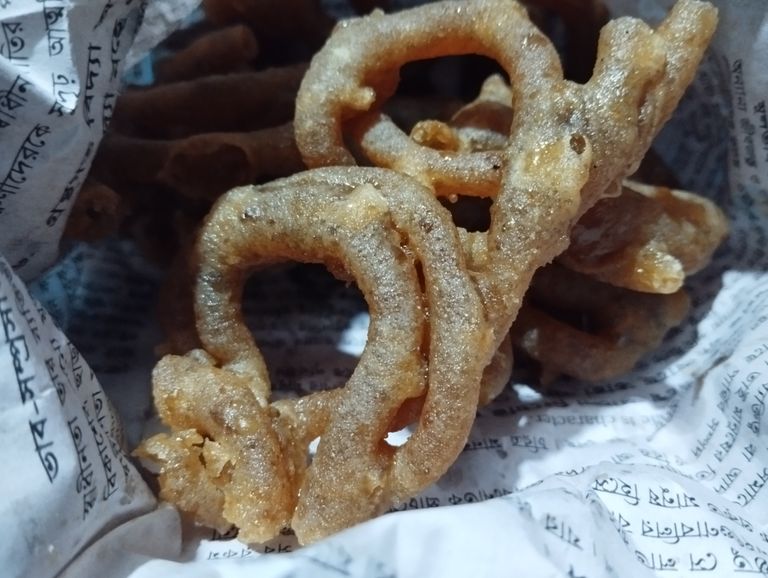
Serving Suggestions
Jalebi tastes best when served warm and crispy. Pair it with a cup of masala tea, a scoop of vanilla ice cream, or a dollop of rabri for an indulgent treat. It's also a great addition to festive meals and breakfast spreads.
Best Flour for Making Jilapi (Jalebi) – A Complete Guide
Jilapi, also known as jalebi, is a beloved dessert across South Asia and beyond. Its golden spirals, crispy texture, and syrupy sweetness make it a favorite for festivals, celebrations, and evening snacks. However, getting the perfect jilapi requires not just the right technique but also the ideal flour. In this guide, we’ll dive into which types of flour work best for making jilapi, their characteristics, and how to choose the right one.
- Types of Flour Used for Jilapi
a) All-Purpose Flour (Maida)
All-purpose flour, or maida, is the most common choice for making jilapi. Its fine texture and moderate gluten content make it perfect for achieving the crispy exterior and soft interior that jilapi is famous for.
Pros:
Easily available.
Produces a smooth batter.
Ensures the traditional texture and taste.
Tips for Use:
Sift the flour to remove any lumps.
Mix it with yogurt and a little water for fermentation.
b) Semolina (Sooji)
Adding a small amount of semolina to the batter can enhance the texture of jilapi. It helps in making the jilapi crispier.
Pros:
Adds a crunch to the texture.
Prevents the jilapi from becoming soggy quickly.
Tips for Use:
Use semolina as a secondary ingredient (10-20% of the flour).
Mix well to avoid granules in the batter.
c) Gram Flour (Besan)
While not as common, gram flour can be used to make jilapi for a slightly different flavor and texture. It’s more common in regional variations.
Pros:
Adds a nutty flavor.
Good for gluten-free alternatives when combined with other flours.
Tips for Use:
Use sparingly or mix with maida to maintain the desired jilapi consistency.
d) Rice Flour
Rice flour is often added in small quantities to make jilapi extra crispy. It’s not used alone but works as a complementary ingredient.
Pros:
Adds extra crunch.
Naturally gluten-free.
Tips for Use:
Limit to 10% of the total flour.
Avoid using it as the main ingredient, as it can make the jilapi brittle.
- Choosing the Right Flour for Jilapi
Factors to Consider:
Texture: For a soft interior and crispy exterior, maida is the best base. Adding semolina or rice flour can enhance crispiness.
Flavor: If you prefer a nutty or earthy flavor, add a small amount of besan.
Dietary Needs: For gluten-free options, combine gram flour and rice flour.
Perfect Blend:
A recommended combination for most jilapi recipes is:
80% Maida (All-purpose flour)
15% Semolina (Sooji)
5% Rice Flour
This mixture strikes the right balance between texture and flavor.
- Additional Tips for Perfect Jilapi
Fermentation: Always let the batter ferment for 6–12 hours for a tangy flavor and better texture.
Consistency: The batter should be smooth and slightly runny, allowing it to flow easily through the piping bag.
Frying: Use medium-hot oil to fry the jilapi. Too hot, and it will burn; too cold, and it will absorb too much oil.
Syrup: Make a thick sugar syrup with a 1:1.5 ratio of sugar to water. Add cardamom or saffron for extra flavor.
- Common Mistakes to Avoid
Using Only One Type of Flour: Relying solely on maida might make the jilapi too soft, while too much semolina can make it overly crispy. Balance is key.
Skipping Fermentation: Without proper fermentation, the jilapi may lack its signature tangy taste.
Incorrect Batter Consistency: A batter that’s too thick won’t form proper spirals, while a thin batter won’t hold its shape during frying.
- Experimenting with Flours
Feel free to experiment with different ratios of flours to suit your preferences. For instance:
Extra Crispy Jilapi: Increase rice flour to 10–15%.
Gluten-Free Jilapi: Use a mix of gram flour and rice flour, with a pinch of xanthan gum for binding.
Conclusion
The key to perfect jilapi lies in selecting the right type of flour and balancing it with complementary ingredients. While maida remains the classic choice, adding small amounts of semolina, rice flour, or gram flour can elevate the texture and flavor. By following this guide, you can create jilapi that’s not just delicious but also tailored to your taste.
Is Jalebi Safe for Diabetic Patients? A Detailed Look
Jalebi, a beloved Indian sweet, is known for its crispy texture, spiral shape, and sugary syrup that makes it irresistible. However, for people with diabetes, indulging in sugary treats like jalebi often raises concerns about blood sugar levels and overall health. This blog explores whether jalebi can be part of a diabetic-friendly diet and provides insights into making informed choices.
Understanding Diabetes and Sugar
Diabetes is a condition where the body struggles to regulate blood sugar levels due to insufficient insulin production or insulin resistance. Managing diabetes requires careful monitoring of carbohydrate and sugar intake to prevent spikes in blood glucose levels. Traditional sweets like jalebi, which are high in sugar and refined carbohydrates, can pose challenges for diabetic individuals.
Why Jalebi is Not Recommended for Diabetic Patients
- High Glycemic Index (GI):
Jalebi is made from refined flour (maida) and soaked in sugar syrup, giving it a high glycemic index. High-GI foods cause rapid spikes in blood sugar levels, which can be harmful for people with diabetes.
- Caloric Density:
Jalebi is deep-fried, making it high in calories. Excessive calorie consumption can lead to weight gain, a common concern for diabetic individuals, as it can worsen insulin resistance.
- Lack of Nutritional Value:
Apart from being a source of quick energy, jalebi offers little to no nutritional benefits. It lacks essential nutrients like fiber, protein, and healthy fats, which are crucial for maintaining stable blood sugar levels.
Health Risks of Eating Jalebi with Diabetes
Blood Sugar Spikes: Consuming sugary and refined foods like jalebi can lead to immediate spikes in blood glucose levels, increasing the risk of hyperglycemia.
Weight Gain: The high calorie and fat content can contribute to weight gain, complicating diabetes management.
Long-Term Complications: Regular consumption of high-sugar foods may increase the risk of diabetes-related complications, such as cardiovascular disease, kidney problems, and nerve damage.
Is Jalebi Safe for Diabetic Patients? A Detailed Look
Jalebi, a beloved Indian sweet, is known for its crispy texture, spiral shape, and sugary syrup that makes it irresistible. However, for people with diabetes, indulging in sugary treats like jalebi often raises concerns about blood sugar levels and overall health. This blog explores whether jalebi can be part of a diabetic-friendly diet and provides insights into making informed choices.
Understanding Diabetes and Sugar
Diabetes is a condition where the body struggles to regulate blood sugar levels due to insufficient insulin production or insulin resistance. Managing diabetes requires careful monitoring of carbohydrate and sugar intake to prevent spikes in blood glucose levels. Traditional sweets like jalebi, which are high in sugar and refined carbohydrates, can pose challenges for diabetic individuals.
Why Jalebi is Not Recommended for Diabetic Patients
- High Glycemic Index (GI):
Jalebi is made from refined flour (maida) and soaked in sugar syrup, giving it a high glycemic index. High-GI foods cause rapid spikes in blood sugar levels, which can be harmful for people with diabetes.
- Caloric Density:
Jalebi is deep-fried, making it high in calories. Excessive calorie consumption can lead to weight gain, a common concern for diabetic individuals, as it can worsen insulin resistance.
- Lack of Nutritional Value:
Apart from being a source of quick energy, jalebi offers little to no nutritional benefits. It lacks essential nutrients like fiber, protein, and healthy fats, which are crucial for maintaining stable blood sugar levels.
Health Risks of Eating Jalebi with Diabetes
Blood Sugar Spikes: Consuming sugary and refined foods like jalebi can lead to immediate spikes in blood glucose levels, increasing the risk of hyperglycemia.
Weight Gain: The high calorie and fat content can contribute to weight gain, complicating diabetes management.
Long-Term Complications: Regular consumption of high-sugar foods may increase the risk of diabetes-related complications, such as cardiovascular disease, kidney problems, and nerve damage.
yumm yumm !!
i Love to et jalebi ,especially at evening with a strong cup of tea.
Thanks for comment.